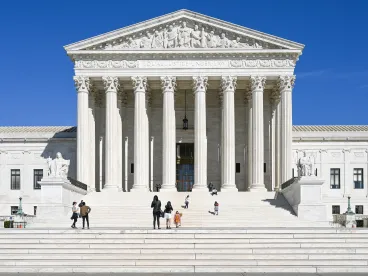Well Amgen, that didn’t seem to go so well.
As a follow up to our post last week, the Supreme Court heard oral arguments in Amgen, Inc. v. Sanofi (No. 21-757). While we obviously don’t have a crystal ball, the questions from the high court suggest that Amgen’s claims are about to be delivered a knock-out punch in this last round.
As expected, many of the Court’s questions to Amgen centered around how many isolated monoclonal antibodies would actually be covered by the claims-at-issue in U.S. Patent No. 8,829,165 and U.S. Patent No. 8,859,741 given that such antibodies must (i) bind to the featured residues and (ii) block binding of PCSK9 to LDLR. The justices seemed really uncomfortable with the idea that any and all antibodies — known and unknown — that obtain the featured functional results would be covered. In fact, at one point, Justice Clarence Thomas said “I think I’m somewhat confused as to exactly what your invention is” and asked “[s]o what is it exactly?” The Court also wrestled with the issue of how much experimentation would be required to reach the full scope of the claims. Amgen’s eventual admission during oral argument that its functional genus claims would cover millions of yet unidentified antibodies did not help matters.
Sanofi and the U.S. government both capitalized on the Court’s noticeable skepticism toward Amgen’s arguments that its claims are enabled and valid despite the broad scope. Sanofi came out swinging and stated that “[t]hey’ve overclaimed, they’ve underenabled, their patent is invalid.” According to Sanofi’s counsel, “functional genus claims are terrible” and “[t]hey retard the science.” The government took its jabs too and contended that a genus claim is only proper if each and every embodiment within the genus has been enabled and suggested that the Court clarify that “you really do need to enable each of the different embodiments that you’re claiming [and] that you can’t say these ones don’t matter…” In this regard, the government told the Court that the 26 antibodies specifically disclosed in Amgen’s patents are all that is enabled.
Will the Court agree with the U.S. government that broad genus claims are “a danger to innovation and especially in the medical field” and deliver the fatal blow to Amgen’s claims? And, if it does, what will that mean for any issued claims with similar functional language? Or will the Court narrowly decide this issue in the context of antibody patents (or similarly unpredictable arts)? We will update you when the Supreme Court renders its decision.




 />i
/>i
